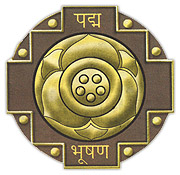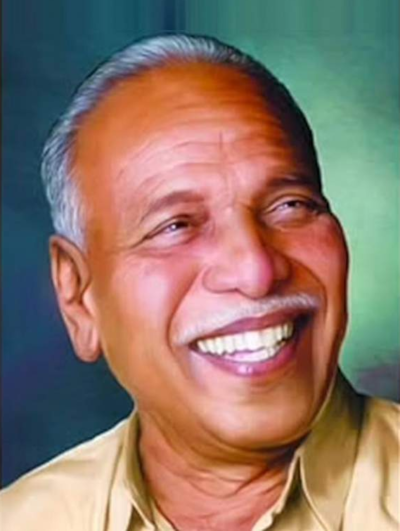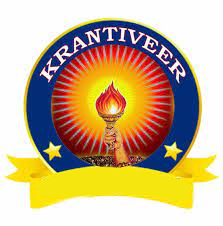Founder



Padmabhushan Krantiveer
Dr. Nagnathanna Nayakawadi
In the Freedom Movement of India, great freedom fighters like Bhagat Singh, Babugenu, Kisan Ahir, and Nanaksing were assassinated for the nation against the British enemy who cruelly ruled over the country for 150 years. Lacs of Freedom fighters were imprisoned, cruelly lathi-charged and fired, and got seriously injured. This war cum freedom movement begins against British Govt. before 1857 through non Cooperation, hesitation movement. In 1920 this freedom war got serious mode under the leadership of Mahatma Gandhi. Poor farmers, labours, students and many people from various castes, and cultures took part voluntarily in the freedom movement after Mahatma Gandhi’s emotional call & challenge. Mahatma Gandhi adopted various tactics to fight against British Govt. like boycotts on imported goods, salt agitations, forest agitation etc. In this freedom movement, Nagnathanna played a heroic role, known for the up and downs and rough as well as dangerous track, at every moment there will be fear to lose a life.
Nagnathanna Nayakawadi was born on 15 July 1922 in a farmer’s family in Walwa, a village in Sangli district in the western Indian state of Maharashtra to Ramchandra Ganapati Nayakawadi and Laxmibai. After early schooling at local schools in Walwa and Ashta, he joined Rajaram High School, Kolhapur and completed matriculate studies in 1948, though there was a break in studies due to his involvement in the Indian independence struggle. Later, he joined Rajaram College for higher studies. During this period, he got involved in the Quit India movement and joined Rashtra Seva Dal, a forum of freedom activists which gave him an opportunity to become an associate of Nana Patil, popularly known as Krantisinh. Nana Patil was a source of inspiration for Nagnathanna. Earlier, Nana Patil had been a founder of the revolutionary Prati-sarkar (Parallel Government) formed in the Satara district of western Maharashtra.
In 1939 he met great educationalist Karmveer Bhaurao Patil and was inspired by his eagerness towards socially & economically weaker people to be educated. Nagnathanna also started voluntary schools in the jungle of Shirala taluka. These schools merged in Rayat Shikshan Sanstha later on. He was a regular reader of “Harijan” Patrika published by Mahatma Gandhi and got impressed by the philosophy of “Bapuji”.
He attended the Akhil Bhartiya Congress conference held at Gavalia Tank (Kranti Maidan ) between 7 to 9 August 1942. Gandhi’s speech at the conference suddenly affected him to leave school and to do full-time for the freedom movement. He started wearing khadi and also opened Khadi Bhandar at Islampur. In between the British Government imprisoned the national leaders. The country becomes hostile. Many of the freedom fighters were underground against British Govt. In 1943, along with Nana Patil, Kisan Ahir and a few others, he declared a (parallel government) Prati Sarkar, which operated in around 150 villages in the western Maharashtra region which included Satara and Sangli.
He and his colleagues resorted to armed agitation against British rule and were involved in fights with the authorities. His army men attacked Police Chowki of Sagaon (Kolhapur) on 10th Oct. 1943 and stole rifles with other weapons. He also got weapons from “Goa” as the Portuguese Government was ruling there. Which was also against British Govt. He formed army in Eaitawade in Shirala taluka and Jungle of Thavda in Kolhapur. In order to raise funds for the movement in 1943, his group robbed a special pay train at Shenoli, Taluka Karad which boost the movement. Also, his group robbed a government treasury in Dhule on 14th April 1944 and supported the insurgency against the Nizam of Hyderabad. In one of the battles with the British police, he was injured by a bullet and was caught after which he was sent to Satara jail where he escaped by staging a jailbreak, along with his fellow activists on 10 September 1944. The British government announced a reward on his head but Nagnathanna managed to stay underground for four years.
To have systematic & technical perfect military education, Anna visited Delhi at the office of I.N.A. Defence Academy through Maniben Patel who was pleading in favour of Azad Hind Sena. There he met two army officers named Nanak Singh and Mansa Singh from “Azad Hind Sena”. They both agreed to attend training camps as trainers at Dhagewadi and Thavade. On 25 February 1946 activists Kisan Ahir and Nanaksing were assassinated in police firing at Sonavade.
Parallel Govt. strictly followed the principles of Gramin Vikas and Panchayat Raj of Mahatma Gandhi. No divination in all villages between castes & culture & being a model village In which all good character people & nationalists should do constructive work jointly, the society became social, educated, strong and non-addicted was a dream of Nagnath Anna. He had spent all his life the propaganda of literacy, faith blindness, cleanliness of villages, men-women equality, the movement against dowry and Gandhi’s marriage system. Poor men and women from society who have been affected due to the cruelty of the upper class, Anna & his followers spent much more time for rescue of them. Nearly two thousand cases were operated on and given proper justice to all normal and poor people. This parallel Govt. was established with the support of normal people of the society and working for the betterment of society to get the freedom from British Govt.
In the presence of Karmveer Bhaurao Patil (Anna) have conducted a meeting on 22nd May 1946 at Aitwade Budruk to cultivate group farming. At night some of the ill-mannered and bad elements attacked them with weapons. This local attack made martyrs of Mr Baburao Kokate (Padwalwadi Tal. Walwa) & Mr Pratarao Patil (Byakud- Karnataka) who were active members of parallel government. This parallel Govt. has also worked for the demolition of Mahar Vatans and said land is to be made in their names as owners. They have helped and supplied ammunition to the workers of Hyderabad freedom fighters.
After Indian independence in 1947, Nayakawadi shifted his focus to social work. He founded a number of educational institutions. In 1949 with a view to educating all common and poor peoples of society, he established Kisan Shikshan Sanstha & started Hutatma Kisan Ahir Vidyalaya and Hutatma Nanaksingh Hostel. These institutes were established for living memories of martyrs, who were co-workers of Nagnathanna. On 13th February 1950, he married Kusumtai by way of Satya Shodhak. After marriage, he had decided to educate her, and as such he made an arrangement for her to stay at Kolhapur in Shree Prince Shivaji Maratha Boarding House’s Free Boarding. Kusumtai completed B.A.B.Ed. And Joined as a teacher, and head-mistress in Jijamata Girls Vidyalaya. He worked alongside Shetamajur Kashtkari Shetakari Sanghatana reformers and was involved in the Sanyukta Maharashtra movement.
There was no good approach road to Islampur from Walwa. Krantiveer Anna requested and visited many times concerned officers to do the road but nothing won constructive, Hence he decided not to pay Land Revenue till the road is completed. After four years of continuous efforts he succeeded. Due to such agitation Govt. has constructed Kolhapur type bandhara near Nagthane on the Krishna River. This has solved many problems of drinking water and water for agriculture. He has established many irrigation schemes in the vicinity of 15 villages and made almost 80% of land brought under irrigation. Due to this income of farmers has increased.
After eight years long opposition from his rivals, he succeeded in getting a sugar factory license in the name of Hutatma Kisan Ahir Sahakari Sakhar Karkhana Ltd., He had allotted most of the shares of the sugar factory to economically weaker sections as well as socially backward people, being shareholders of the sugar factory. This is a significant example in India. After getting a licence and fulfilment of share capital, he established the sugar factory within 11 months at only 8.50 crores as against a sanction of 9.00 crores. The first trial season of the sugar factory was commissioned on 20th January 1984. Due to transparent policy and work today in the sugar sector had established a “Hutatma Pattern”, which has broken various records such as in production quality, especially in the sugar recovery and always given the highest sugar cane price. Hutatma Kisan Ahir sugar factory is the “Light House” for all other sugar factories in India. It is an extreme example in India, where a man & a woman from a minority class & also from scheduled tribes & caste made the Chairman and members of the board. Which reflects Nagnathanna’s greatness of mind and sacrifice.
Krantiveer Nagnath Anna represented members of the Legislative Assembly from the Walwa constituency between 1957 to 1962 being a member of Sanyukuta Maharashtra agitation. He had formed Warana Dam sufferers to whom he had given a place in Walwa and other villages permanently. He also solved the problems of the Koyana Dam, Kalamwadi Dam and all other Dam sufferers in Maharashtra and rehabilitated them suitably. At village Kini, District Kolhapur he had taken a huge conference of farmers and labourers which was consisting of 65,000 mobs.
In 1993 there was a severe earthquake in Killari District Latur, he was the first man who helped the sufferers and brought 108 students from that area to Walwa and took the entire responsibility of education, lodging along with boarding. Like earthquake sufferers, he had taken many of actions to solve the problem like drought sufferers. He had made a strong movement for water in the drought-prone area of 13 talukas of Sangli, Satara and Solapur districts. Established Pani Parishad for the drought-affected area. This strong water movement diverted the attention of the State and Central Govt. towards all these Talukas.
The equal distribution of water in the Krishna Basin movement was continuously active for long 18 years. Now the success of this movement has established Krishna Khore Vikas Mahamandal through which the water problem of these 13 drought-prone talukas got some relief. At Walwa he had organised twice Dalit Adiwasi Rural Literature Conference to boost and publish the literature of these rural & educated backward communities. He also organised a revolutionary, students’ conference from District Sangli, Satara and Solapur to guide new vision to them. He had also organised a big and joint conference of Sugar industry labourers, Cane growers, Dam sufferers and draught affected at Niphad, District Nashik.
He had also opposed payments of various unwanted taxes. He had also opposed and organised a strong movement against the ill-legal demand of Income tax from Agri. based co. operative sugar industry. He had also opposed Govt. to wipe out the zoning of the sugar cane areas which has affected the sugar cane product unnecessarily and succeeded in rezoning the area. He had followed strongly the ethics and principles of Mahatma Phule, Rajarshi Shahu Maharaj, Dr Babasaheb Ambedkar, Krantisinh Nana Patil and Mahatma Gandhi throughout his life. Krantisinh Nana Patil was considering Nagnath Anna as his own & loving son, and due to this people called him “Krativeer Nagnath Anna” automatically.
On 8th December 2007, Shivaji University honoured Nayakawadi with the degree of D.Lit. The Government of India awarded him the civilian honour of the Padma Bhushan in 2009. He was also a recipient of several other national & social awards and honours.
He died on 22 March 2012, at the age of 89, succumbing to age-related illnesses at Lilavati Hospital in Bandra, Mumbai, survived by his wife, Kusum, two sons, Vaibhav and Kiran and two daughters, Vishakha and Pragati. The sugar factory founded by Nayakawadi in Walva, Hutatma Kisan Ahir Sahakari Sakhar Kharkhana, has since been renamed as Padambhushan Krantiveer Dr Nagnathanna Nayakawadi Hutatma Kisan Ahir S. S. K. Limited, Nagnathannanagar in his honour. The Government of Maharashtra has constructed a memorial for him at his native place Walwa, at a cost of Rs.150 million and with a constructed area of 18,000 sq. ft which houses a hall and a museum. For the coming generations, this memorial will be an inspiration to them.
